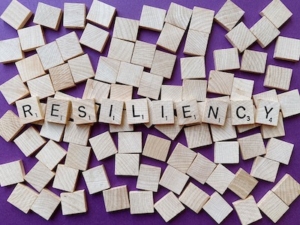 Most of us have become incredibly comfortable within our own four walls over the past several months.
Most of us have become incredibly comfortable within our own four walls over the past several months.
If you were someone who used to commute to an office every day, the first few weeks of the pandemic might have felt particularly unsettling as your routine was upended: No corridor chit chat where you found out what was really going on behind the scenes with a particular deal; no lunches with colleagues to get caught up on projects.
And then, you might have realized that you were able to plausibly replicate those experiences, making them work virtually, whether through video calls, Slack channels or a combination. In fact, you might have decided that working remotely would be an ideal option—not just for you but for your company as well.
If so, you’re not alone. In fact, a June Yahoo Finance – Harris poll found that 54% of respondents are currently working from home due to changes from COVID-19, and half of those believe it’s better than going to the workplace.
Many organizations are still encouraging their employees to work remotely, at least for the time being. But others are slowly starting to urge them back in the office, mistakenly believing it’s a necessity for productivity.
If you’re one who has seen the benefits of remote work over the past few months—or has always hoped to try a new flexible schedule—now is the time to seize on the opportunity. Here is your six-point plan to talk to your manager about formalizing a remote work plan.
1. Get the facts.
While companies pivoted to remote work because they had to, the truth is that a large number of jobs lend themselves to being done virtually—in fact, one analysis by the University of Chicago says that’s the case for 34% of U.S. jobs. Add to that the fact that a Gartner survey found that 82% of company leaders say they plan to allow at least some remote work going forward, and you can make a solid case that remote work is the wave of the future.
2. Prove your productivity.
No doubt you’ve been showing your worth to your company day in and day out during the pandemic, but now is the time to quantify those achievements. Start a document that highlights some of your biggest wins over the past few months, whether it was securing a new client (or keeping one from jumping ship), implementing new processes or even overseeing a remote intern.
While you want to make sure that your eventual contract specifies output in work product and goals, rather than hours, some managers still equate productivity with time worked. Track your hours for the next few weeks so that you can show your supervisor that you don’t see remote work as a chance to slack off. Again, you don’t want hours to be the ultimate metric, but it can help assuage concerns from a boss who still values face time as a measure of production.
3. Outline how your responsibilities can be managed remotely.
If you routinely collaborate with others, your supervisor might be concerned that a lack of face time can hamper your projects. Talk to key colleagues about how they feel about replacing in-person meetings with video calls or commit to coming into the office one day a week for an all-hands-on-deck meeting.
Find out how your supervisor wants to hear from you—whether it’s a quick check in at the beginning and end of the workday, or a detailed weekly progress report.
Prove you’ve done your homework and your plan is solid.
4. Document your work environment.
Women can be at a disadvantage when they request remote work because a supervisor might assume you will be shouldering the burden of extra domestic duties while at home. Couple that with the fact that many kids won’t be returning to a full-time classroom, and you need to make clear that your time working virtually will be spent doing exactly that, not overseeing school work.
Show your supervisor that you’ll have a private office where you can take professional video calls and agree on the hours you’ll be working. The onus is on you to check in frequently to allay any concerns your colleagues may have.
5. Offer a trial period.
Sometimes its’ easier for a boss to say “yes” if they know it’s only temporary. While you’ve already essentially been doing this for the past few months, they might have been looking forward to assembling the whole team. Offer to give it a try until the end of 2020, for example, and then the two of you can re-evaluate how it’s working on both sides. Remember that it’s a two-way street; you want to make sure you are getting the support you need and that you don’t feel your opportunities for advancement or to work on prime projects are being restricted by not being in the office.
6. End on a high note.
Ultimately you want to show your manager that your remote work is mutually beneficial. You don’t want to end the conversation from the positon of being a supplicant, or sacrificing salary or title for this new arrangement. If COVID-19 has shown anything, it’s that remote work can and does work. Use this new realization to approach your boss with a solid plan that documents your continued value—even in the virtual world.
by Cathie Ericson







